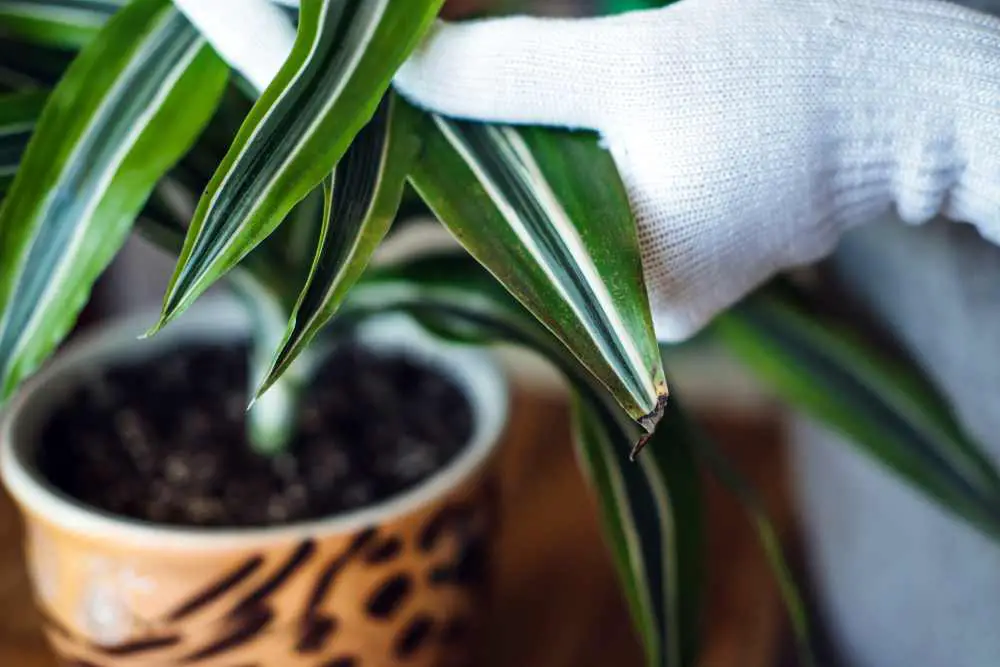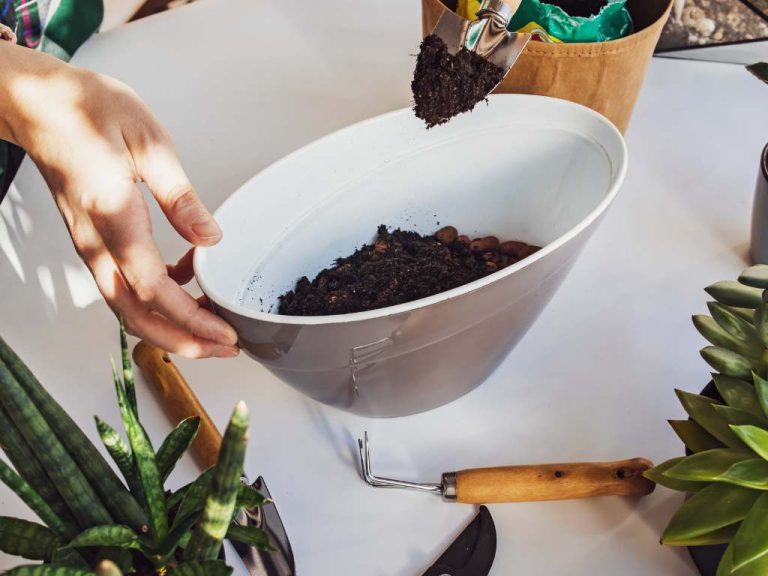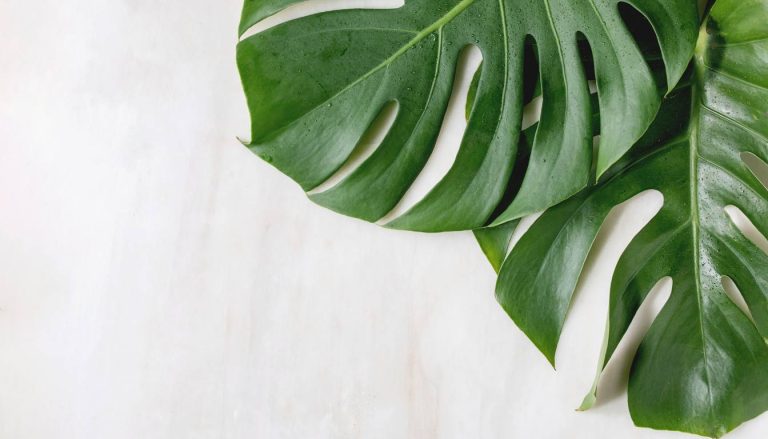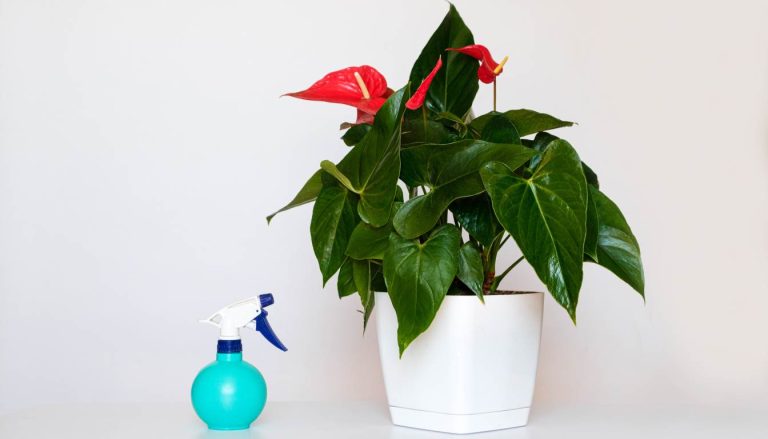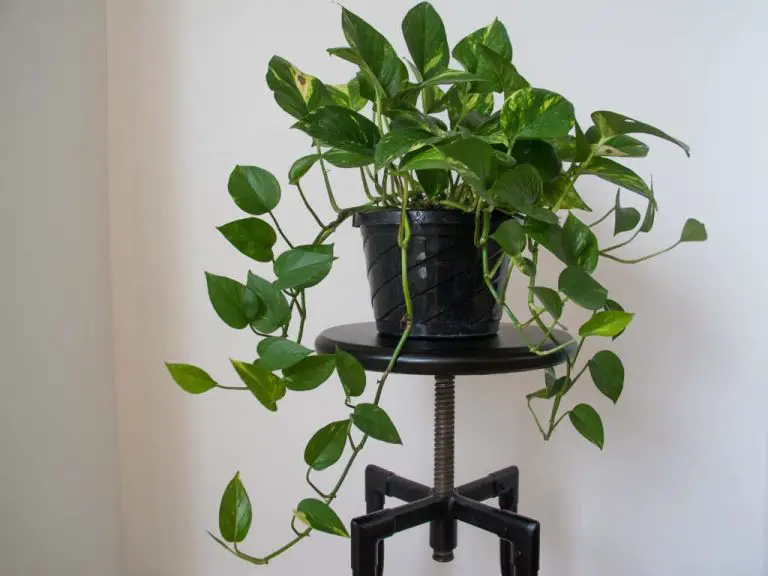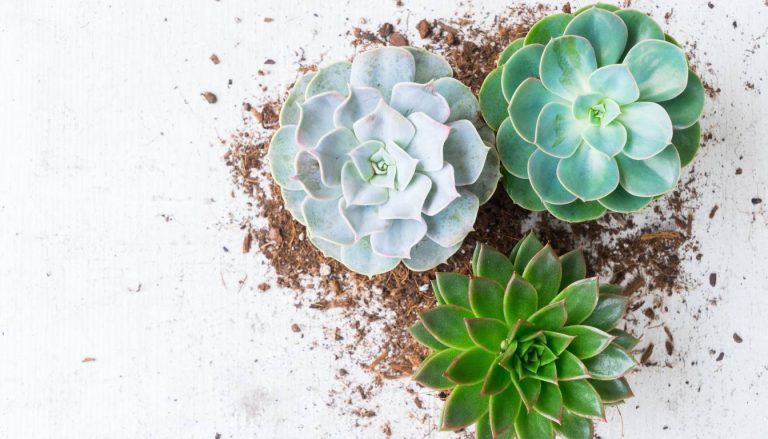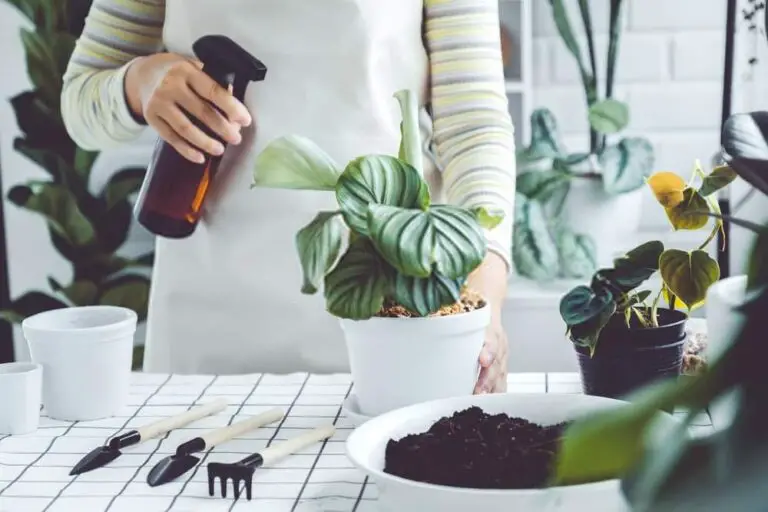The Complete Corn Plant Care Guide: Tips and Tricks
The corn plant (also known as Dracaena) is a houseplant with long, strap-like leaves that mimic the corn plant, more generally known as the corn we eat. There are several Dracaena fragrans cultivars with diverse leaf kinds, including Dracaena fragrans’massangeana‘, Dracaena fragrant ‘lindenii‘, and Dracaena fragrans ‘victoria‘. It is a well-known houseplant native to West and Tropical Africa.
Dracaena Corn Plants are often cultivated in homes and offices, where their huge size creates an eye-catching focal point. Mature Dracaena can grow to be over 6′ tall, with leaves up to 2′ long; however, they can be cut to fit into smaller settings. They’re also well-known for their ability to filter the air. If you are a corn plant fan this corn plant care guide might help you to care for your plant.
About Dracaena Fragrans
This plant grows with one or more canes (stems) and then produces new stems and a crown of leaves towards the top of the cane. Indoors, these canes can reach heights of up to 6 feet. They can be cut at the top once they reach an appropriate height.
The corn plant can bloom inside, but it is unlikely to do so. In its natural environment, the plant produces aromatic blooms. The foliage is the main draw for this plant.
Types of Dracaena plants
- D. fragrans : The original, having solid green leaves. The original is the least common, and while it has its followers, the multicolored variations vastly outsell it.
- D. fragrans ‘massangeana‘ : This Corn Plant variety is by far the most widely used and popular. It is simple to understand why this plant is so sought-after and why so many people just name it Dracaena massangeana and omit the “fragrans.”
- D. fragrans ‘victoria‘ or ‘victoriae’: It is quite similar to’massangeana’ in that the yellow stripe goes down the middle of the leaf, but it has smaller but wider and almost triangular leaves. The yellow corn stripe is also more noticeable.
- D. fragrans ‘lindenii’: In this variety yellow color is only present on the edges of the leaves rather than the entire surface, which makes it simple to mistake for another indoor plant named Dracaena reflexa ‘Variegata’ or the Song of India.
11 Corn Plant Care Tips
Light
Dracaena prefers bright, indirect light. Place your indoor plant near a window that faces east. Filter intense sunshine using a sheer curtain for south or west-facing windows. Dracaena can tolerate low light, but if the light is too low, the leaves may lose part of their lovely variegation. The leaves of corn plants will get brown and burned if they are exposed to excessive direct sunshine.
Watering
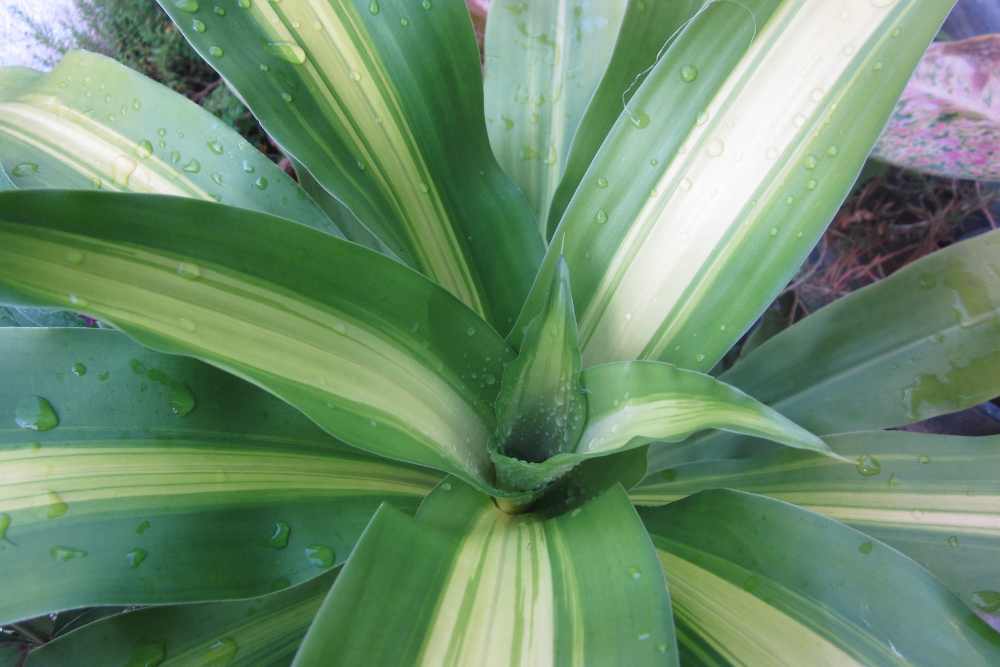
Moisture-rich but never damp soil is ideal for corn plants. Water corn plants, whenever the top inch of soil dries during the spring and summer months when they are actively growing. During the fall and winter months, water only when the top 2″ of soil is dry.
Always monitor soil moisture before watering because Dracaena fragrans might develop root rot if plants receive too much water. There should be some “drying time” for these plants in between waterings. Therefore, water thoroughly and then refrain from adding further water until the top inch of the soil has dried off.
If your corn plant is put in a favorable location with good lighting and warm temperatures (aside from winter), you can maintain the soil’s moisture at all times. In Winter, limit watering as you would for practically other houseplants, but don’t let the soil totally dry out.
Temperature and Humidity
The optimum temperature range for corn plants is 60 – 75 F. If you temporarily relocate your corn plants outside for the summer, bring them inside before temperatures reach this level. Keep humidity levels between 40% and 50% to simulate the plant’s natural environment.
Use a humidifier or set the plant’s pot on a pebble tray with water to increase the humidity level. Make sure the pot’s bottom doesn’t come in contact with the water. You should also spray the foliage on a regular basis.
Soil
Corn plants can be grown in the majority of well-draining home potting mixtures. Drainage is essential since standing water can quickly harm or kill a corn plant. Choose a perlite and/or vermiculite combination, and make sure the planter or container has appropriate drainage holes.
The ideal potting soil mixture for growing corn plants is one that is loose and loamy. Make sure the soil has sufficient drainage because its roots do not do well in standing water. Clay and organic materials can help retain nutrients in place. Peat moss and coco coir are both great components for corn plant soil mixes. Corn plants do well in slightly acidic soils with a pH of 6.0.
Fertilizer
Corn plants prefer rich organic soil. Use a balanced liquid fertilizer every two months throughout the growing season, and feed lightly during the winter.
Superphosphate-based fertilizers should be avoided since corn plants cannot tolerate excessive fluoride content. During their growing season, they use a liquid fertilizer as a foliage spray on corn plants once a month. Use a fertilizer that is water soluble.
Drainage is Essential for Your Corn Plant
You don’t want your corn plant to sit in moist soil; therefore, good drainage is essential. Make that the pot’s bottom has drainage holes. After watering your corn plant, make sure to empty the water that has gathered in the saucer. Keep your corn plant’s pot out of this watery pool. It will induce root rot.
Pruning
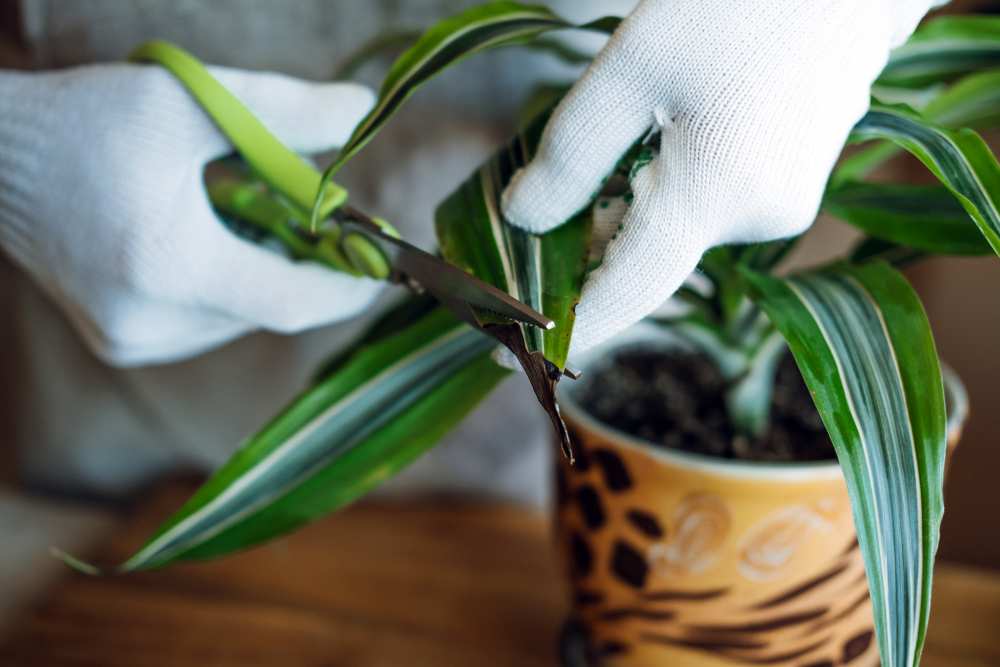
If the leaves on your plant have turned brown, trim the leaf back to the stem. The lowest leaves will progressively turn yellow. When they do, cut them off. You may adjust the height of the corn plant by pruning the top.
- Indoor corn plants have a maximum height of 6 feet. According to the place, pruning them in the early spring or late fall can help you control the growth.
- Use pruning shears with a sharp blade. Make sure you disinfect them with a solution of water and bleach to get rid of any infections.
- Remove the entire top of the cane after cutting it to the desired height just below the crown of the leaves sprouting from the top of the cane.
- It may appear dramatic, but new leaves will sprout from the top of the cane within a few weeks. Ensure that you acquire at least one leaf node, which is where the cluster of leaves emerges from the cane.
- You can propagate this cutting by immersing the cut end in water and placing it in a warm location.
- As long as you keep it warm, the roots should begin to grow swiftly. Once the roots are between 1-2 inches long, plant the cutting in potting soil.
- Alternatively, you can dip the tip of the cutting in rooting powder and put it in potting soil immediately.
Keep Your Corn Plant Dust Free
Your corn plant’s leaves gradually become covered in dust. The layer of dust reduces the plant’s capacity to photosynthesize. Wiping the leaves of your Corn Plant with a moist cloth regularly will help maintain your plant’s health. Use a dry duster or duster cloth to remove the dust on the leaves. Avoid putting leaf-shining chemicals on your corn plant.
Common Pests & Diseases
Spider mites, thrips, mealybugs, and scale, typical issues with many houseplants, should be kept an eye out for the plants. These plants can create damaged and unhealthy-looking leaves, and you may even detect small insects moving around on the plant.
Check for pests beneath the leaves and along the trunk on a regular basis because early treatment is the most effective.
Dust the plant’s leaves with a moist towel regularly to keep them looking their best and to prevent bugs from invading.
Mealybugs or soft scales may be present if you see a white cottony mass. Scale, which can pierce the plant and drain its juices, are white, tan, or dark brown insects that are attached to the stalks and stems of plants. Spider mites can be identified by minute brown or yellow dots on the leaves, occasionally accompanied by fine webs. The large numbers of little insects crawling around the plant might be aphids. A constant stream of water can be used to cure the majority of common pests.
Use a spray bottle to rinse the affected area or place it under running water while doing so. In order to confirm that the pests have not returned, let the area thoroughly dry before checking on it again. If water is ineffective, think about using a non-toxic household insecticide, like neem oil. A natural insecticidal spray, such as one produced from 1 tsp. of mild liquid soap and 1 liter of water, or neem oil, will help get rid of pests. It can also assist in solving the issue right away by gently wiping or rinse the leaves.
Corn plants may get root rot if they are overwatered or have insufficient drainage. Stop watering the plant until the problem is fixed if you detect a bad smell or a soft patch on the stem. If root rot spreads too far, the plant may be beyond saving.
Leaf spot disease can be identified by the presence of light brown or red dots on the leaves. If you find these spots, remove and destroy contaminated leaves right away to help prevent disease spread. If too many leaves become diseased, the plant will die. Water the plant directly into the soil and avoid any conditions where water can pool on the leaves to help prevent leaf spot disease.
Dracaena fragrans plants may eventually become harmed or even killed if pests or diseases are allowed to persist. Maintain the proper quantities of water and sunlight to help safeguard your corn plant since healthy corn plants are less vulnerable to pests and diseases.
Propagating Dracaena Fragrans
The corn plant is ideal for propagation since producing viable buds is usually simple and enjoyable. The greatest time to propagate Dracaena is in the spring because that is when the growing season starts.
Start by cutting a healthy, bud-filled stem in the 2 to 5 inches range. To prevent harming the plant, use a sterile tool. Place the cutting in a new pot with fresh soil, making sure that the shoots are above the soil level. Water the newly planted cuttings as soon as possible and continue to care for them as usual.
Repotting
- A corn plant only needs repotting when the roots extend through the drainage holes since it grows slowly.
- If you detect roots growing through the drainage hole or above the earth, the plant is root-bound. The beginning of the growth season in early spring is the ideal time to repot.
- But every 2 to 3 years, you should take the corn plant out of its container and change the potting soil. Even the best potting soil becomes compacted after this period and no longer holds water or air.
- You will require potting soil, a spoon, and a container with drainage holes that is 2 – 3 inches wider than the previous container.
- You might need assistance lifting your plant if it is large. The day before you repot the plant, lightly water it. Use fresh potting soil since the nutrients in old soil may have been reduced.
- Turn the plant on its side and gently slip it out if it is little. If the plant is large, leave it upright. You may need to run a blunt knife over the inside edge of the pot to loosen it.
- Eliminate any dead roots and aerate the soil surrounding them.
- Place the plant in a fresh pot with two inches of wet potting soil, then top with additional soil until the roots of the cane are exposed.
- Pat down gently around the plant’s base to anchor it. As soon as possible, water the plant and keep it in the same location where it was growing until it recovers.
- 29 Bucket Gardening Ideas for a Lush, Compact Garden - October 30, 2024
- 20+ Chic Boho Bedroom Ideas for a Cozy and Stylish Retreat - June 20, 2024
- 12+ Modern Boho Living Room Ideas to Create a Unique Oasis - June 10, 2024

